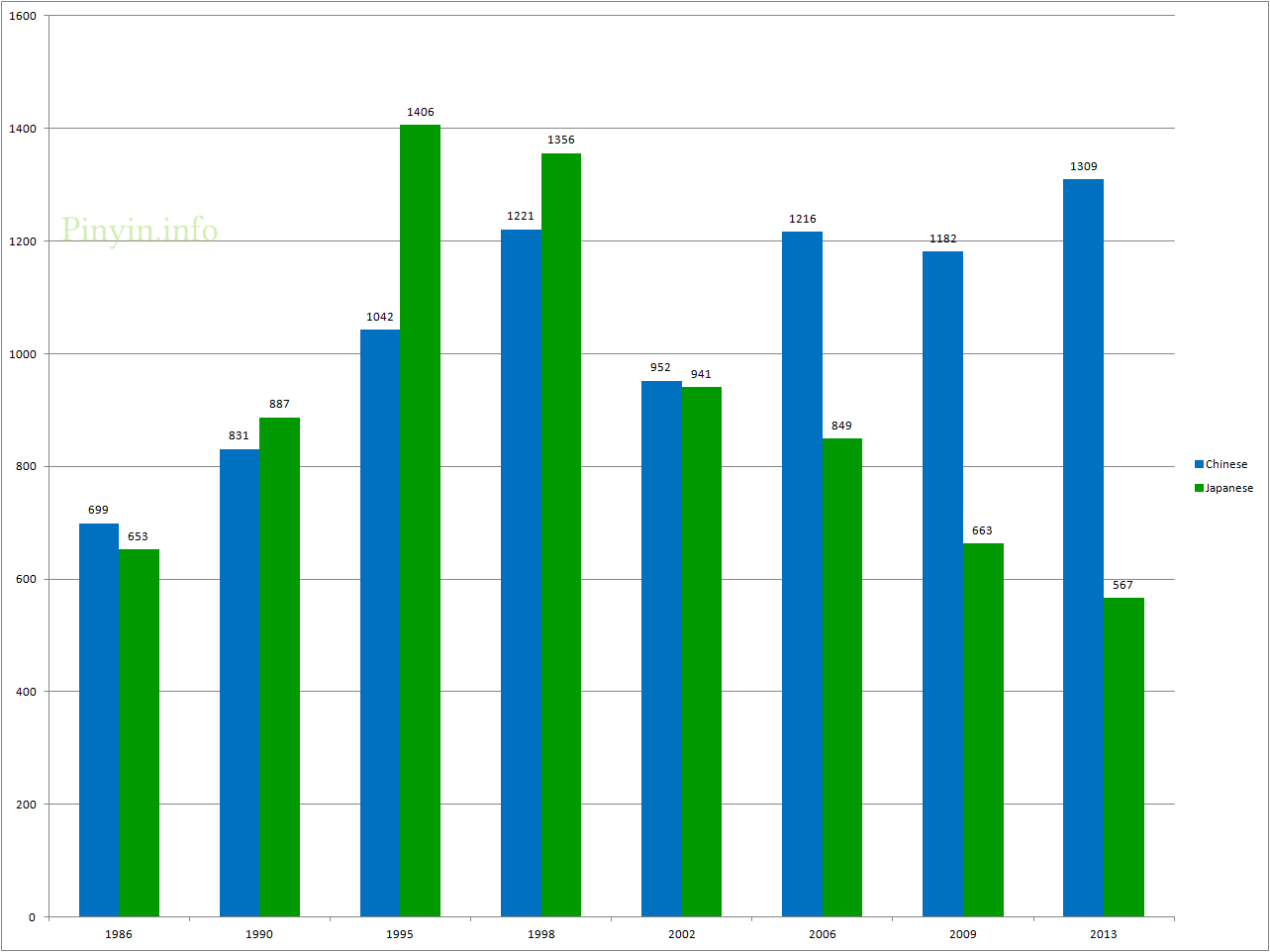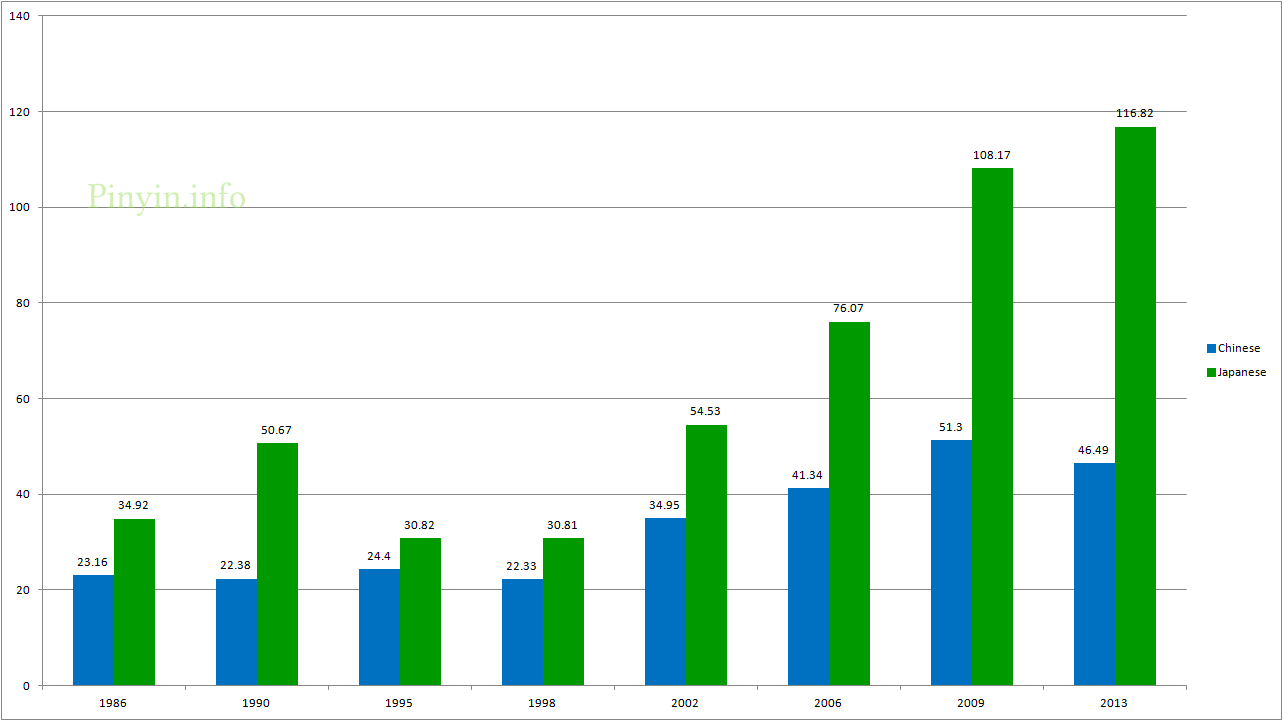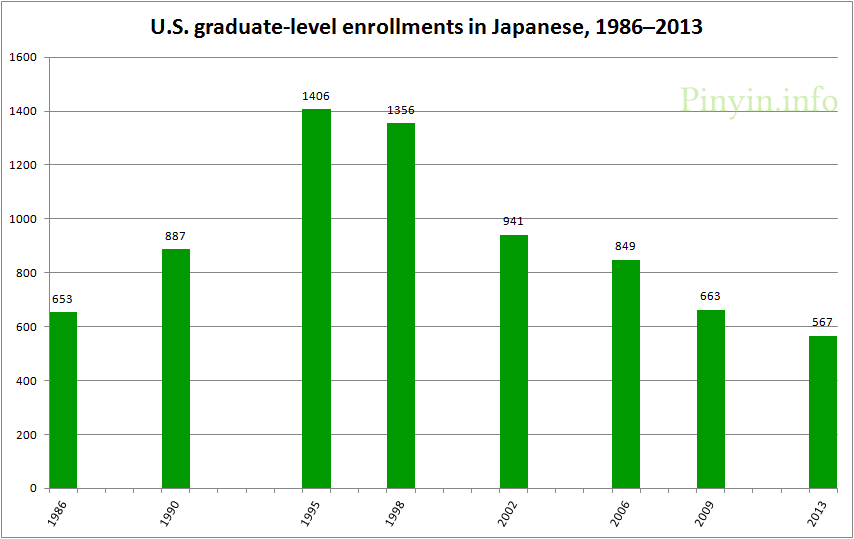Fewer and fewer people are taking graduate-level Japanese classes in U.S. universities, according to data recently released by the MLA.
Graduate-level enrollments in Japanese classes are at their lowest level since 1983 and have declined to less than half of their peak level, which was reached in 1995.
Here are a few more years. When looking at the earlier peaks, it’s worth remember that there are a lot more people in graduate school now than there were several decades ago, both in absolute terms and as a percentage of the population. So the recent figures are even more bleak than they might appear at first glance.
U.S. graduate-level enrollments in Japanese, 1960–2013

You might be wondering how Japanese stacks up against another Asian language. Here’s a comparison with graduate enrollments in Chinese (in blue). Again, the situation isn’t looking good for Japanese.
Graduate enrollments in Japanese vs. graduate enrollments in Chinese, 1986–2013

And here’s a look at the number of undergraduate enrollments in Japanese (green) and Chinese (blue) per enrollment in a graduate course in the same respective language.
Number of undergraduate enrollments in Japanese and Chinese per enrollment in a graduate course for the same language

Even so, boosters of Japanese may take heart that there are still more post-secondary enrollments in Japanese than in Mandarin. But more on that in a later post.
(For those of you who are wondering, no, this blog isn’t really back just yet. But I think these numbers are interesting. Also, my MLA-related posts don’t need Hanzi or Pinyin diacritics, which would only get messed up anyway. Thus, I might as well post the information for others to see.)

